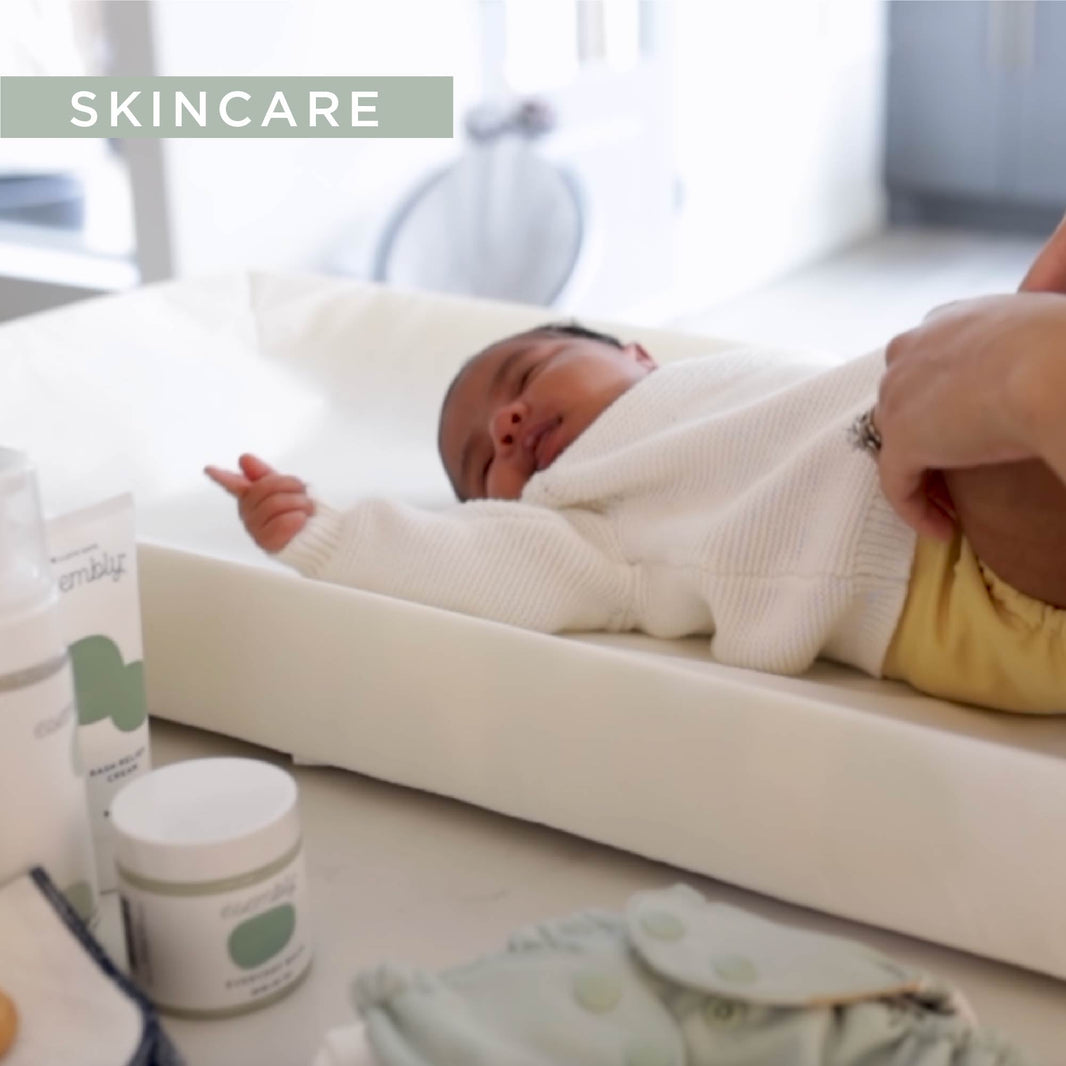We know. Such a glamorous topic. Right? But the diaper rash we are about to describe affects all newborns (whether they are in cloth diapers or disposables). You might hear it called the “butt crack rash,” but around here, we lovingly refer to it as the “secret poo” rash. (we’ll tell you why below!) And as mentioned, it’s a specific kind of rash that really only affects newborns. In this blog post, we’re diving into what it is, what causes it, and how to treat it effectively so your little one can stay comfortable and diaper rash-free.
What is The “Secret Poo" Rash?
Regardless of if you’re using cloth diapers or disposables, (or a combo! Because in case you hadn’t heard, cloth diapering is not all or nothing😉) babies require changing every 2-3 hours, or immediately if they poop. Problem is, at the newborn phase, you might find that your baby deposits a tiny amount of poop, and sometimes, this tiny amount can go undetected! This is the genesis of the notorious "secret poo" rash.
That sneaky little bit of poo left against your baby's delicate skin, even for a short period, can lead to nasty irritation.
How Do I Know if My Baby Has This Kind of Newborn Diaper Rash?
If you’re changing your baby and you see a hot pink/red shiny rash in their butt crack or around their anus, this is it. The rash generally looks like a sunburn with clearly defined edges.
How Do I Treat a Diaper Rash in the Crack of my Newborn’s Bum?
Now that we've identified the culprit, let's talk about how to treat this diaper rash.
Step 1: Thoroughly Clean and Dry
First and foremost, you’ll want to clean AND DRY your baby’s bottom. We highly recommend our super-soft organic cotton cloth wipes and our hydrating Wipe Up Wash. Once clean, pat the area dry with a fresh cloth wipe. The drying step is very important when treating diaper rash.

Step 2: Apply a cloth safe zinc oxide diaper rash cream
Once your baby’s bum is clean and dry, it's time to bring out the secret weapon – Rash Relief Cream. Not only is it guaranteed to fully wash out of cloth diapers, but it does an AMAZING job of treating rash with top-quality organic ingredients like non-nano zinc oxide (which works beautifully as a moisture barrier, while also reducing inflammation), organic coconut oil, organic shea nut oil, and organic olive oil. The Rash Relief Cream will help heal the rash while also preventing future pees and poos from further irritating the already irritated skin allowing it time to heal.
To use, work a generous layer of Rash Relief Cream into the affected area, being sure to cover the entire rash. Really rub the cream in to get the maximum healing benefit.
*If you’re not using our Rash Relief Cream, a suitable alternative would be a zinc-based wetness barrier cream. If you’re using cloth diapers, be sure that the zinc levels are not above 14% and that it is free of any petroleum, as these ingredients will not wash out of your cloth diapers.
(For more on understanding cloth friendly skincare and what ingredients to avoid, check out this post)
Step 3: Prevention is Key
Generally we only recommend using Rash Relief Cream as a treatment for active diaper rash and we steer families towards something like our Everyday Balm for daily prevention of rash. BUT, if your baby is particularly prone to this specific kind of newborn diaper rash we would advise you to use the Rash Relief as a preventative treatment at every diaper change.
To use diaper cream to prevent the secret poo newborn diaper rash, you’ll want to apply a thin layer of Rash Relief Cream in the crack of your baby’s bum during every diaper change. This proactive approach will help reduce the chances of recurrence. And rest assured, this is a phase that your baby will outgrow. Before you know it their poops will become larger and more noticeable making the secret poo rash a thing of that past.
Step 4: Modifying your cloth diaper wash routine
If you’re cloth diapering there is one more thing you can do to help prevent and treat diaper rash. Add white vinegar to the final rinse! White vinegar is liquid laundry magic. Not only does it serve as a natural fabric softener leaving your diapers extra soft, but it also lowers the pH of the fabric making your cotton diapers even gentler on your baby’s skin.
Here’s how to properly add the vinegar to your next cloth diaper load:
First step is to make sure you have a solid cloth diaper wash routine. Our step-by-step instructions can be found here: The Complete Guide to Washing Your Cloth Diapers at Home: The Esembly Way
Then, as you’re loading your detergent (we highly recommend our patented Washing Powder) in for the 2nd wash cycle, pour ½ - ¾ cup white vinegar into the fabric softener dispenser of your washing machine. Putting it in the fabric softener dispenser will ensure the vinegar gets pulled into the cycle at the very end during the final rinse (which is exactly where you want it).
Growing Out of Newborn Diaper Rash
As we mentioned, the good news is that the "secret poo" rash is primarily a newborn problem. As your baby grows older (and their poops become less…discreet… for better or for worse 😅) the incidents of “sneaky poops” become less and less common.
If you're interested in learning more about skincare check out our Guide to Cloth Diaper friendly Skincare post.









